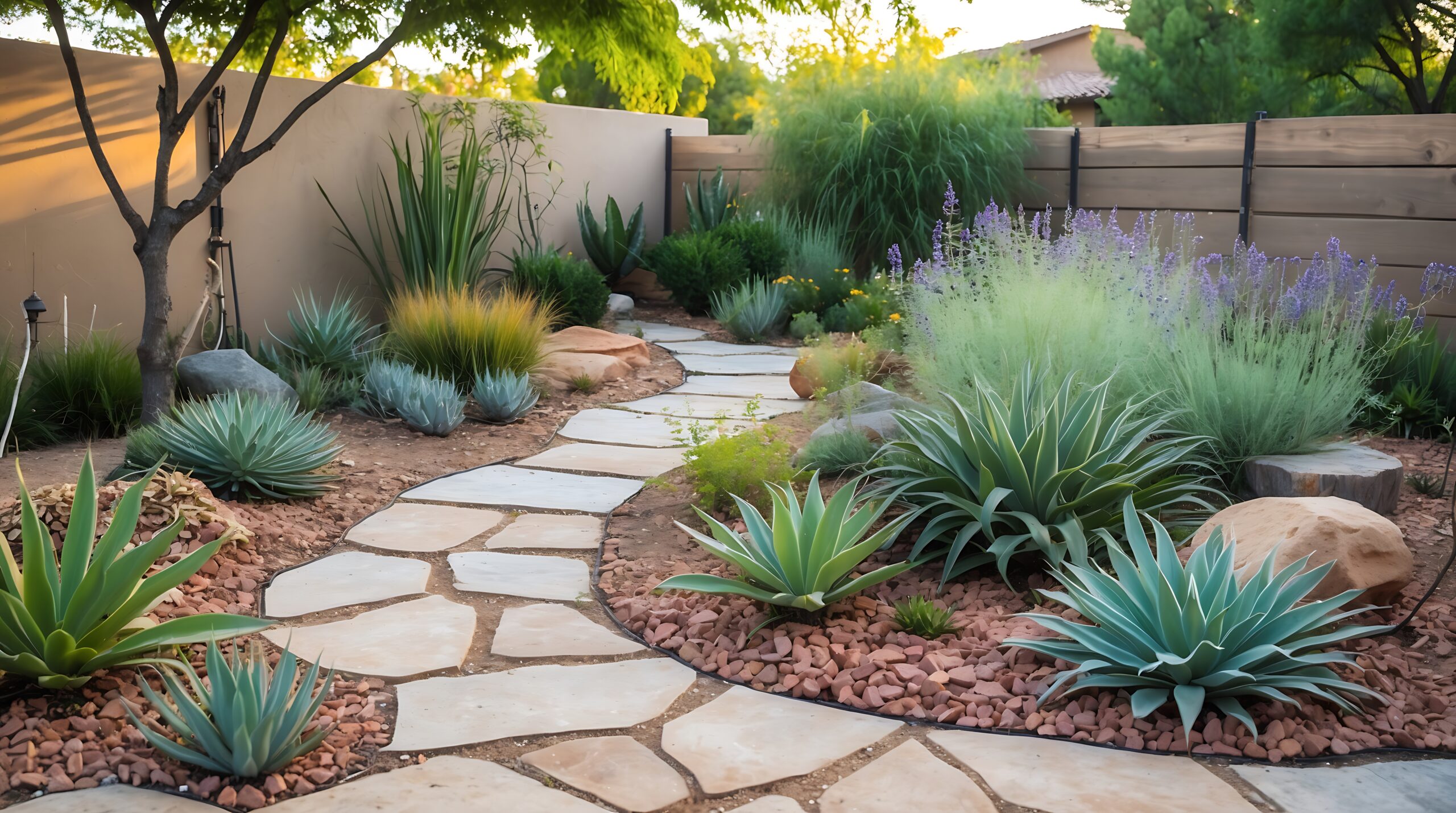Adding an ADU to your Tucson property is an exciting way to expand your living space, invite multigenerational living, or generate rental income. But just as important as the structure itself is the environment that surrounds it. Thoughtful landscaping can transform the yard around your ADU into a beautiful, sustainable oasis that enhances both the look and value of your property. At Tiny Homes of Tucson, we understand the unique challenges and opportunities of landscaping in the Sonoran Desert. Below, we’ll explore plant choices suited for Tucson’s climate, creative design elements that harmonize with the local landscape, and practical tips for maintaining a stunning and sustainable yard.
Embracing Tucson’s Desert Climate
Tucson is nestled in the heart of the Sonoran Desert, which means landscaping here requires a different approach than in other regions. With more than 350 sunny days a year, water conservation is key. Native and drought-tolerant plants not only thrive in these conditions but also reduce the need for irrigation and maintenance, saving time, money, and natural resources.
When planning your ADU’s landscape, consider working with the region’s natural beauty rather than fighting against it. Selecting the right plants and design elements ensures your outdoor space stays vibrant year-round while supporting local ecosystems.
Choosing the Right Plants for Desert Landscaping
Native plants are the foundation of any successful Tucson landscape. These species are already adapted to the region’s heat, sun, and soil, making them resilient and low-maintenance options. Popular choices for Tucson ADU landscaping include:
- Desert Marigold: This perennial produces cheerful yellow flowers nearly year-round and thrives in full sun.
- Red Yucca: With striking, tubular red flowers in spring and summer, red yucca is a favorite for attracting hummingbirds.
- Saguaro and Barrel Cacti: Iconic and sculptural, these cacti add height and interest without demanding much water.
- Desert Spoon and Agave: Their dramatic, spiky leaves create texture and are well-suited for xeriscaping.
- Brittlebush: With silvery leaves and bright yellow blooms, this plant provides color while requiring minimal care.
Integrating native trees like the Palo Verde or Mesquite can provide valuable shade, lowering temperatures around your ADU and reducing cooling costs. Strategic tree placement can cut summer energy use by up to 25%.
Creative Design Elements that Blend with the Desert
A well-designed landscape does more than just look good—it also integrates seamlessly with the natural surroundings. Here are a few design ideas to consider for your Tucson ADU:
Pathways and Hardscapes: Use decomposed granite, flagstone, or natural gravel for walkways and patios. These materials reflect the desert’s earthy tones and require little maintenance. Incorporating curves and organic shapes can soften the look and mimic the flow of the landscape.
Rainwater Harvesting Features: Creating swales or installing rain barrels helps capture precious rainfall for your plants. Tucson Water offers rebate programs for rainwater harvesting, making it easier to implement sustainable practices.
Outdoor Living Spaces: Consider shaded patios, pergolas, or ramadas, which provide relief from the sun and extend your living space outdoors. Climbing vines such as bougainvillea can add color and additional shade.
Lighting: Low-voltage or solar-powered lights can illuminate pathways and highlight architectural features without adding to your energy bill.
Wildlife-Friendly Elements: Birdbaths, pollinator gardens, and native shrubs can attract hummingbirds, butterflies, and beneficial insects, enhancing the natural beauty of your property.
Sustainable Maintenance for Year-Round Beauty
Desert landscaping is not only beautiful but sustainable, especially when you follow simple maintenance practices. Mulching around plants helps retain soil moisture and suppresses weeds, while drip irrigation delivers water directly to roots, minimizing evaporation. Drip systems can use up to 50% less water than traditional sprinklers.
Regularly check your irrigation system for leaks, especially during the hot summer months. Prune trees and shrubs in late winter or early spring, and avoid over-fertilizing, as native plants generally require less feeding than non-native species.
Remember, even with the best planning, landscapes are living systems. Over time, you may find that some plants thrive while others need to be replaced. Embrace this natural evolution and continue to experiment with textures, colors, and arrangements that reflect your personal style.
Adding Value and Curb Appeal to Your ADU
A thoughtfully landscaped ADU not only provides a welcoming environment for residents and guests but can also increase your property’s value. Well-landscaped homes can see a high return on investment upon resale. In Tucson, where outdoor living is a way of life, a beautiful yard can be a significant selling point.
At Tiny Homes of Tucson, we believe every ADU should feel like home—inside and out. Whether you’re adding a backyard casita for family or creating a rental retreat, thoughtful landscaping ties your property together and celebrates the unique beauty of the Sonoran Desert.
For more tips on ADU planning, sustainable building, and local resources, explore our blog or contact us to discuss your next project. Let’s work together to create an outdoor space that’s as inviting as your new ADU.


